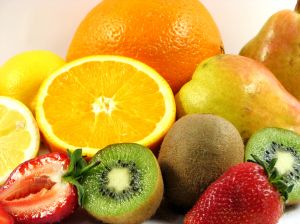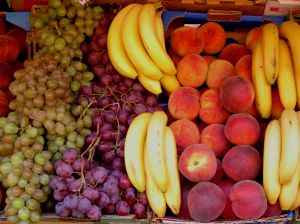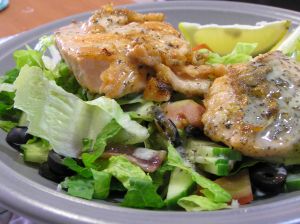OSTEOPOROSIS.
To continue with different diseases, we should take a look at
osteoporosis, or brittle bones. It is one of the most typical national
diseases in many countries: according to the WHO, it is the second
most serious problem after cardiovascular diseases. (Etelä-Suomen
Sanomat, 29 June 2004, p. 15). In Finland, as many as 400,000 persons
(almost 10% of the population) have this disease. It is especially
problematic for middle-aged and older people, but it has its origins
in the youth.
What
happens is that the bones gradually become weak and brittle, and then
even a small fall or stress can break the bones (for example, in
Finland, according to statistics there are 26,000 fractures caused by
osteoporosis annually; Etelä-Suomen Sanomat 29 June 2004, p. 15).
The process can be accelerated by cortisone products, epilepsy
medicine, over-consumption of coffee or alcohol, and tobacco usage
(which can prevent the absorption of calcium).
How can
osteoporosis be prevented or treated? There are a few important
things. The following points have been found to be important:
A
sufficient supply of calcium
during childhood and youth is one of the most important means in
preventing osteoporosis. Calcium builds bones and teeth,
and that is why we must get enough of it -- approximately 800 mg per
day – from our food.
Many
studies have suggested that an insufficient supply of calcium
is clearly associated with adult osteoporosis and to childhood bone
fractures. The newspaper Etelä-Suomen Sanomat reported (date is
missing), that, “Children who don’t drink milk were found to
have more fractures than usual, according to an American study. With
children who didn't drink milk, the supply of calcium remained
under the recommended levels and the bone density was
noticeably lower than that of others of the same age. The researchers
and health-care professionals wanted to challenge parents to take care
that children get enough of all the necessary nutrients. Every third
child had had a fracture before puberty. Most of the fractures had
occurred before the age of seven. A strong skeletal structure
decreases the risk of fractures already as a child and can decrease
the risk of fractures caused by osteoporosis in later years.
Milk and milk products contain important proteins to the skeletal
structure, minerals and vitamins. (...).”
Especially
the insufficient use of milk products – those that contain a lot of
calcium – can be one reason why many people get osteoporosis:
Milk
Consumed Already as Child Impacts Adulthood
Drinking milk
as a child promotes the good condition of bones also as an adult, says
a new American study.
A diet
without milk or an insufficient amount of milk is connected to the
brittleness of bones and an increased risk of fractures. Those who had
avoided milk in their childhood had double the risk of having a
fracture when they were over 50 when compared with their friends who
had regularly consumed milk.
In the
study, they compared the bone density and amount of fractures in 3,200
women to the use of milk in childhood and youth. Milk consumed in the
childhood during the ages 5–12 and 13–17 was connected to a larger
mineral content of the bone tissue. The study has been published in
the American Journal of Clinical Nutrition.
Milk
contains calcium and vitamin D, which are necessary for the growth and
regeneration of bones. There are also several nutrients, such as
protein, phosphorus, zinc, and magnesium in milk, which can increase
the mineral contents of the bone.
High
mineral content reflects the firmness of the bone. A small mineral
content promotes brittleness of the bones and increases the risk for
getting fractures.
Nutrients
from milk are needed during the whole lifetime, since bones always
regenerate. The same minerals from milk can be eaten in the form of
yogurt, cheese, or other milk products. (Etelä-Suomen Sanomat, [date
is missing])
How can we
assure that we get enough calcium? The necessary amount can be gotten
from three glasses of milk per day. In addition, there is plenty of
calcium in other milk-based products (sour milk, yogurt, curdled whole
milk, cheese), fish, seed, nuts, almonds, soybean, white beans, and
green vegetables, such as cabbages and spinach.
Vitamin D
is another important contributor to bone health. Its significance in
the prevention of osteoporosis is based on this: If there is not
enough vitamin D in our body, calcium cannot be properly absorbed into
the body. Another possible important factor in the absorption of
calcium is vitamin K, which we can get from all cabbages, spinach,
peas, green beans, avocado, and some vegetable oils. For example,
broccoli came into light in a study done in the universities of
California and Pittsburgh. According to these studies, those women who
had passed menopause and ate broccoli at least three times a week were
80% less likely to suffer hip fractures than those women who ate
cabbage only once a week (Readers Digest 12 / 2001, p. 70). In
addition, vitamin D can have its own important meaning in the
prevention of other diseases. According to some studies, deficiency of
vitamin D can also promote cancer, infections, and diabetes. That is
why getting a sufficient supply is important.
What are
good sources of vitamin D? It is formed in our skin in sunlight. Other
sources are especially fatty fishes, vitaminized margarine, milk
(the vitamin is naturally present in full milk, but in many countries
such as Finland, it has been added also to low-fat milk), forest
mushrooms and eggs.
Exercise.
When we try to prevent osteoporosis, we cannot forget physical
exercise. Exercise that is diverse and includes knocks and bumps is
good for the bones. If osteoporosis has already developed, the most
strenuous exercise must be avoided, but suitable exercise can be
useful in its prevention.



